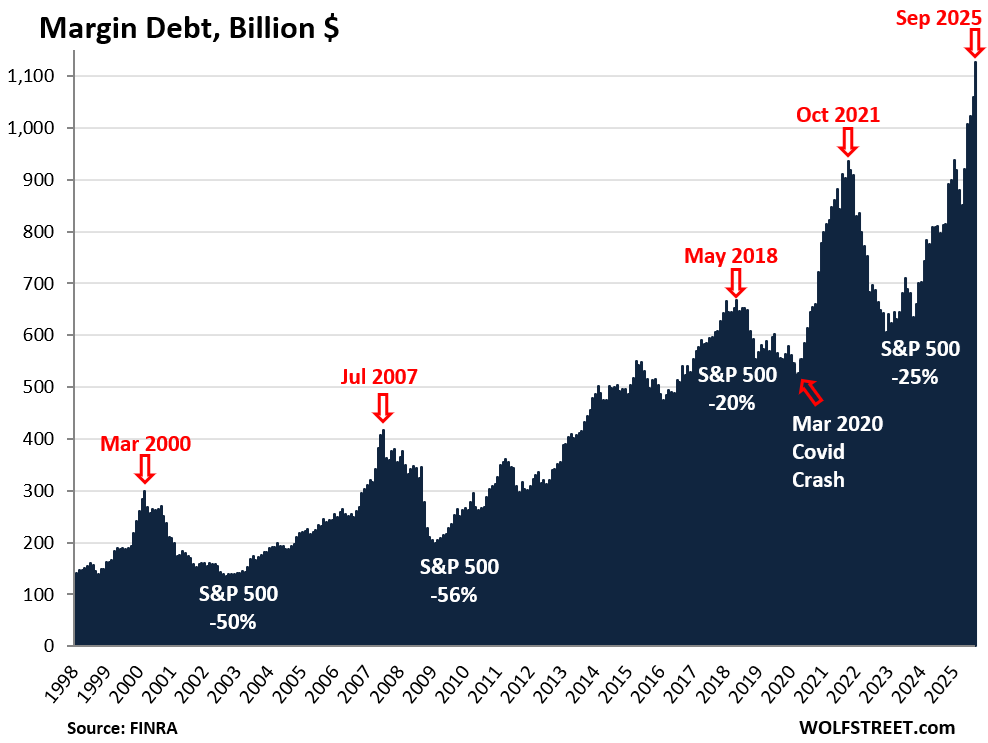Stock Market Leverage Blows Out
by Wolf Richter • Oct 15, 2025 • 84 Comments
Everyone is talking about the AI bubble – proclaiming it or denying it – but this is what it looks like from the leverage point of view.
By Wolf Richter for WOLF STREET.
Leverage in the stock market has been spiking since April. In September, margin debt – the amount investors borrowed from their brokers – spiked by another 6.3%, or by $67 billion, from August to a record $1.13 trillion.
Since April, margin debt has spiked by 39%, the biggest five-month increase since October 2021; it was in early November 2021 that stocks began to tank, with the S&P 500 ultimately dropping by 25%.
The additional leverage – borrowed money flowing into the stock market – creates buying pressure and drives stock prices higher. Leverage is the great accelerator on the way up, but it’s also the great accelerator on the way down. Multi-month surges in margin debt, jumping from new high to new high, indicate excessive speculation and risk-taking and have invariably led to sharp selloffs:

Everyone has been talking about the AI bubble, either proclaiming it or denying it – Is it Really Different this Time? – but this is what it looks like from the leverage point of view, and it’s scary: A massive spike in risk-taking and excessive speculation in the stock market, as demonstrated by this multi-month spike in margin debt from record to record, that is creating big vulnerabilities and risks.
In the long-term view of margin debt, such as in the chart above, it’s not the absolute dollar amounts that matter, but the steep spikes in margin debt from new high to new high over a multi-month period.
The annotations in the chart:
March 2000 was the beginning of the Dotcom Bust, during which the S&P 500 fell by 50% and the Nasdaq by 78%.
July 2007 was just before the stock market started turning into the beginning of the Financial Crisis, during which the S&P 500 fell by 56%.
May 2018 was followed by a 20% decline in the S&P 500 by late 2018.
October 2021 led to a 25% decline of the S&P 500.
March 2020 was the Covid crash, caused by investors’ reaction to the pandemic. At the time, leverage was relatively low and had been declining, which was a good thing and protected the market. If leverage had been spiking for five months from record to record before the pandemic, the sell-off would likely have been much more severe. |





